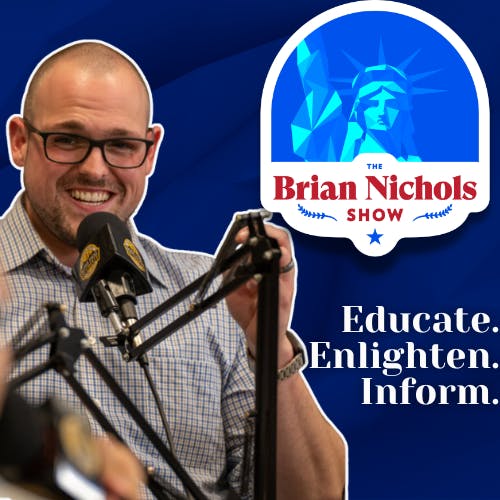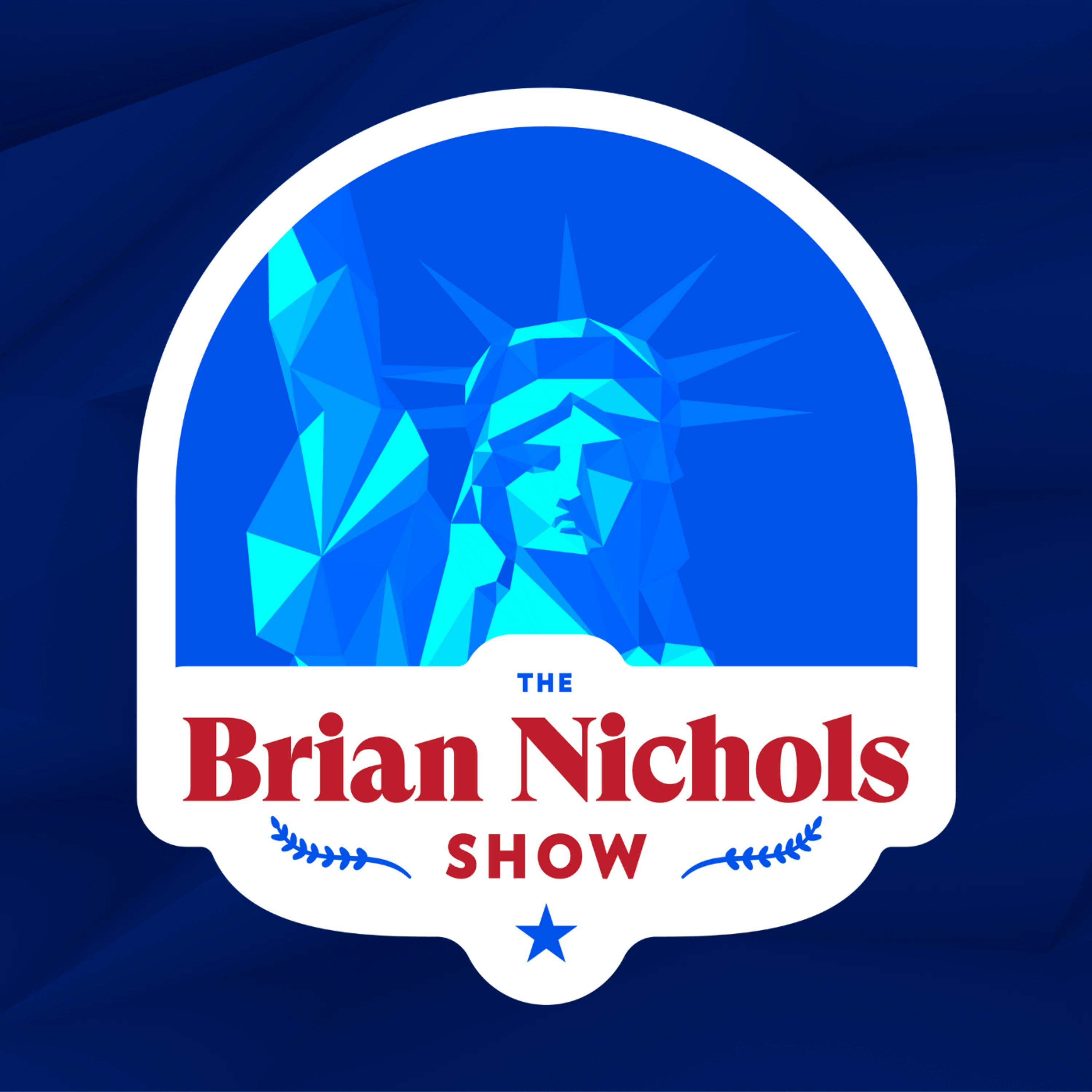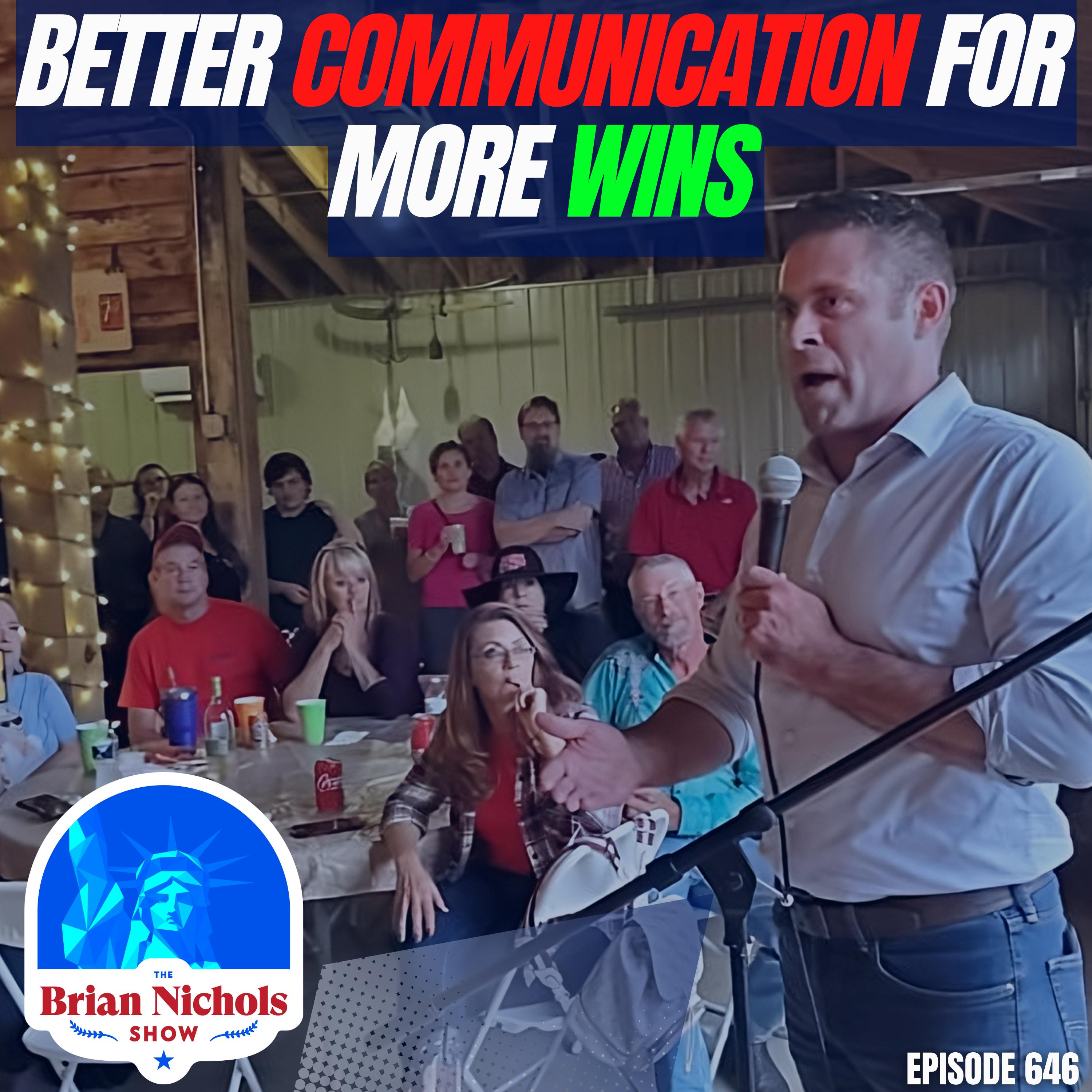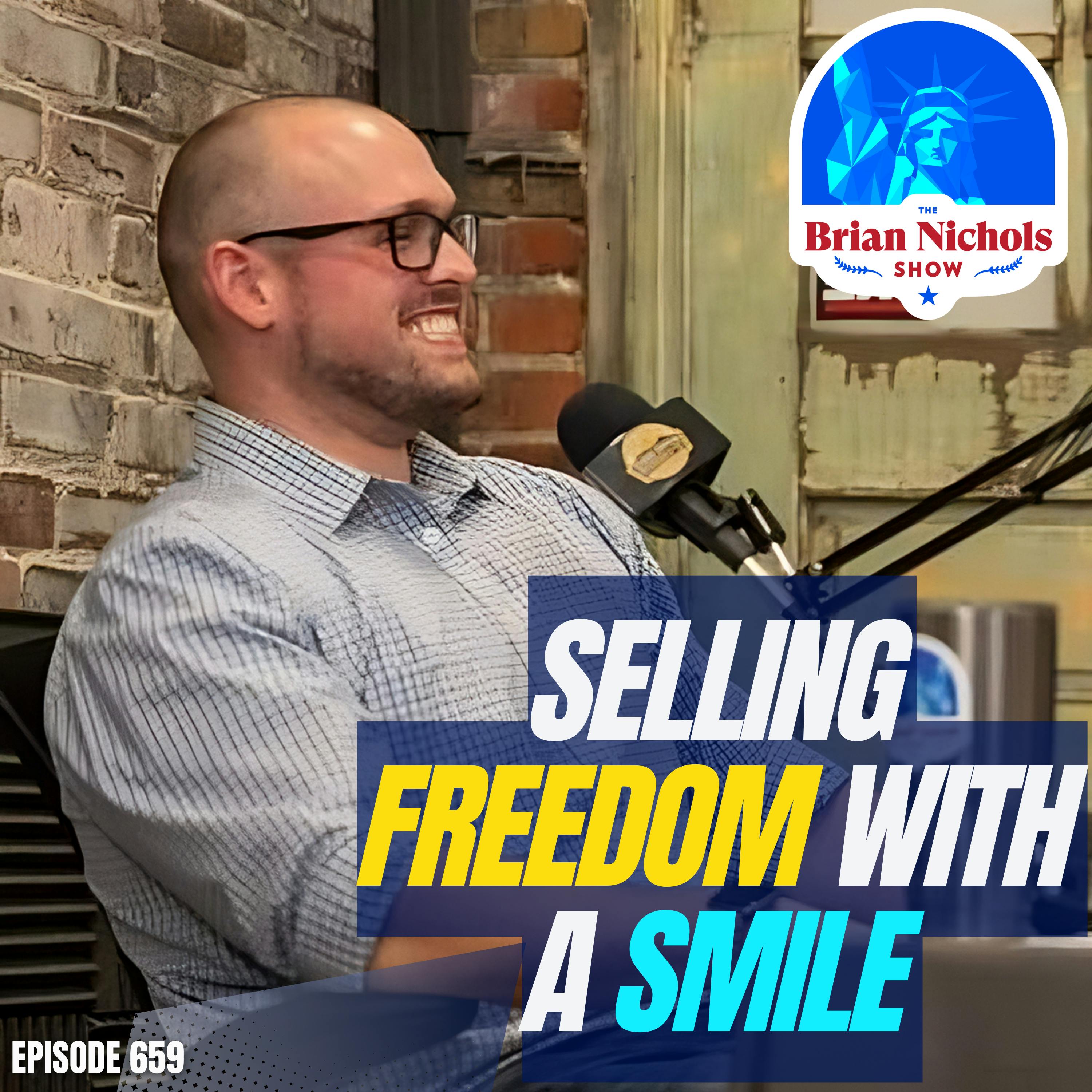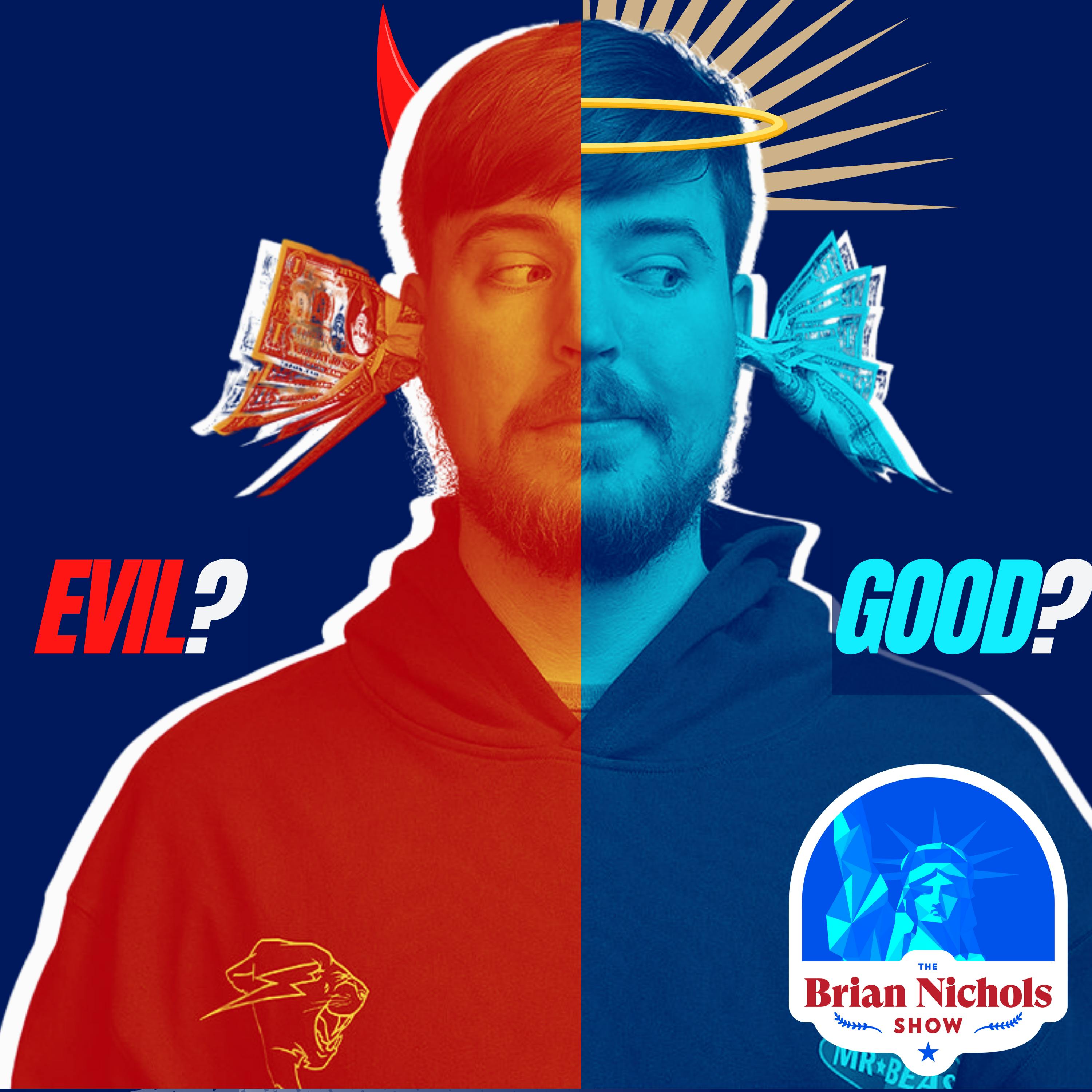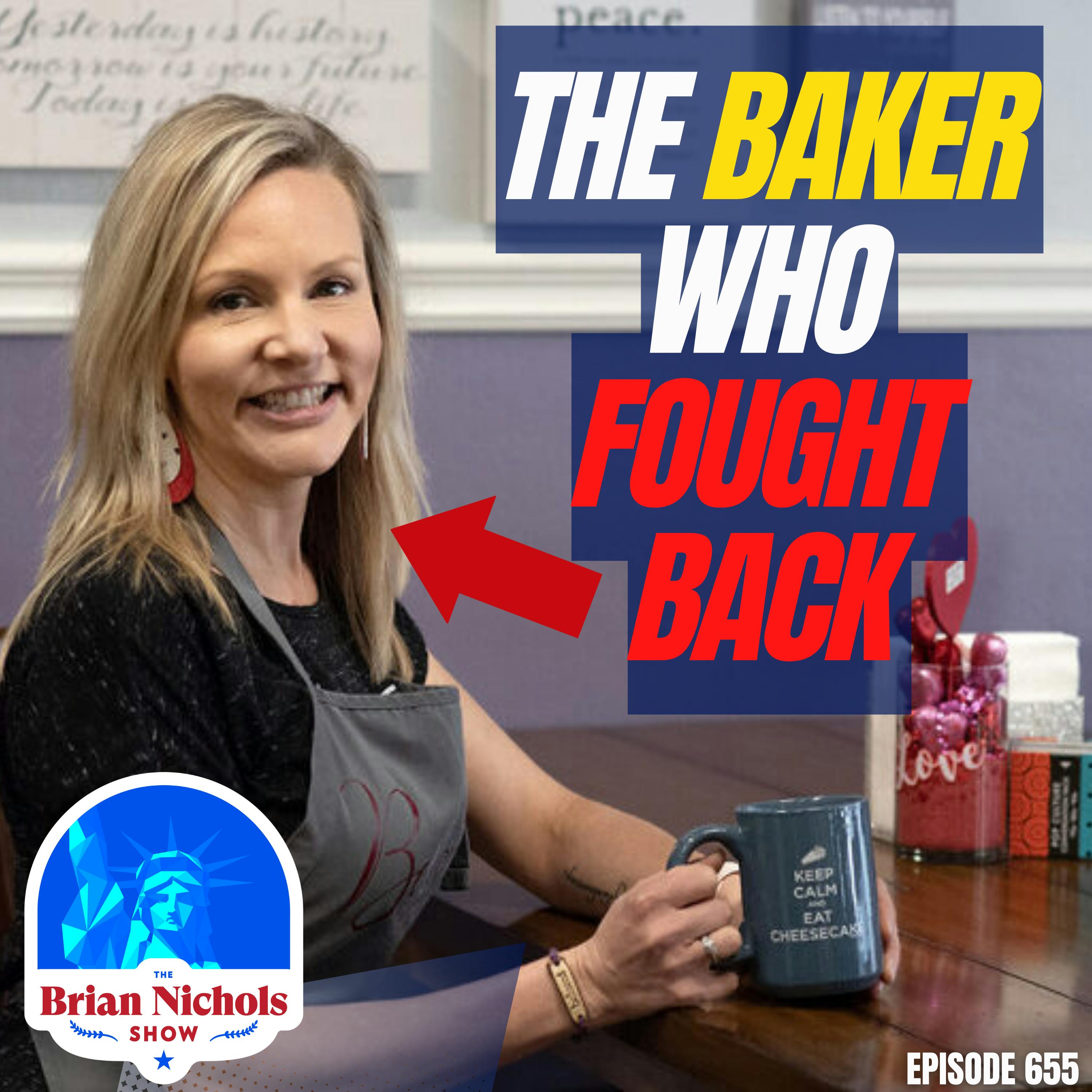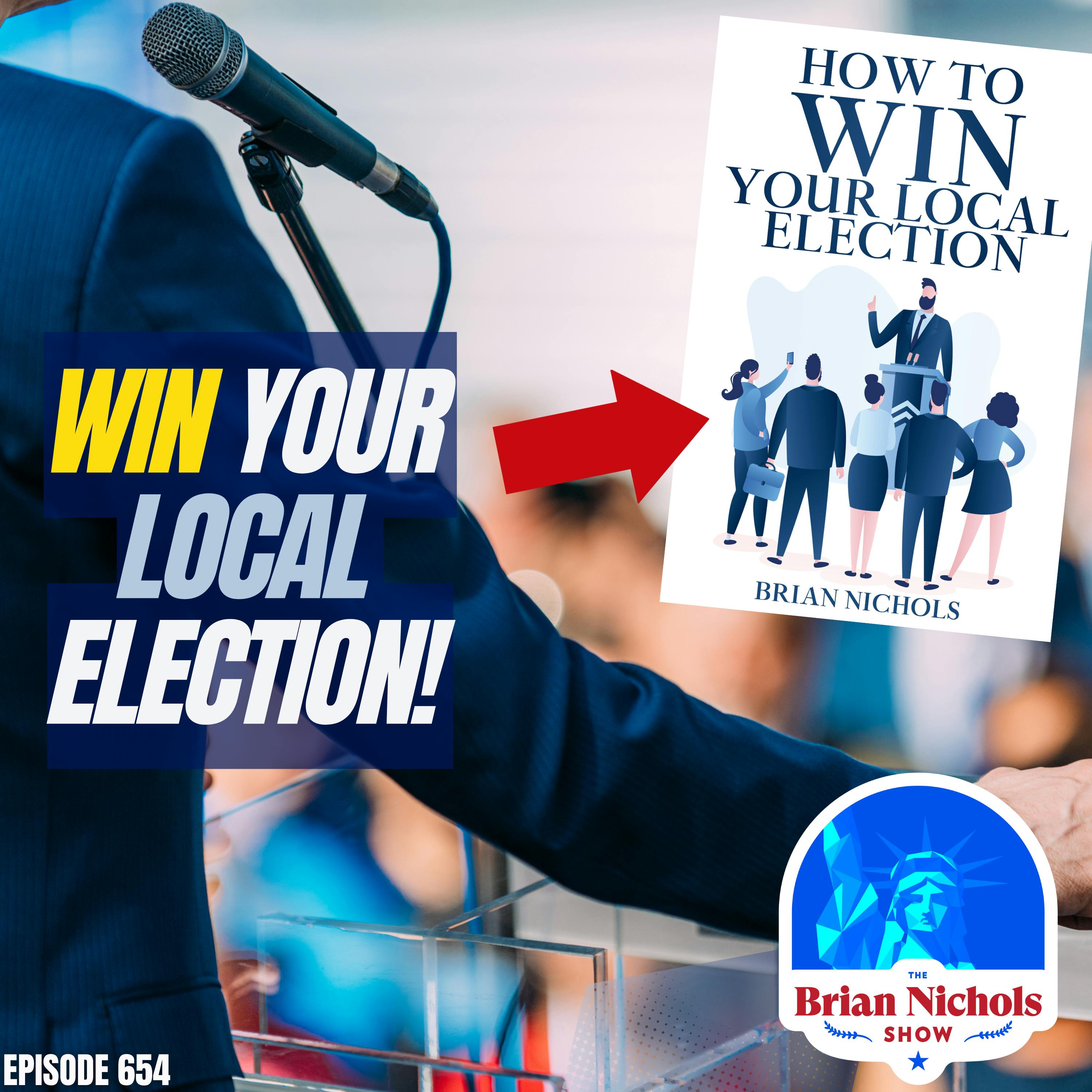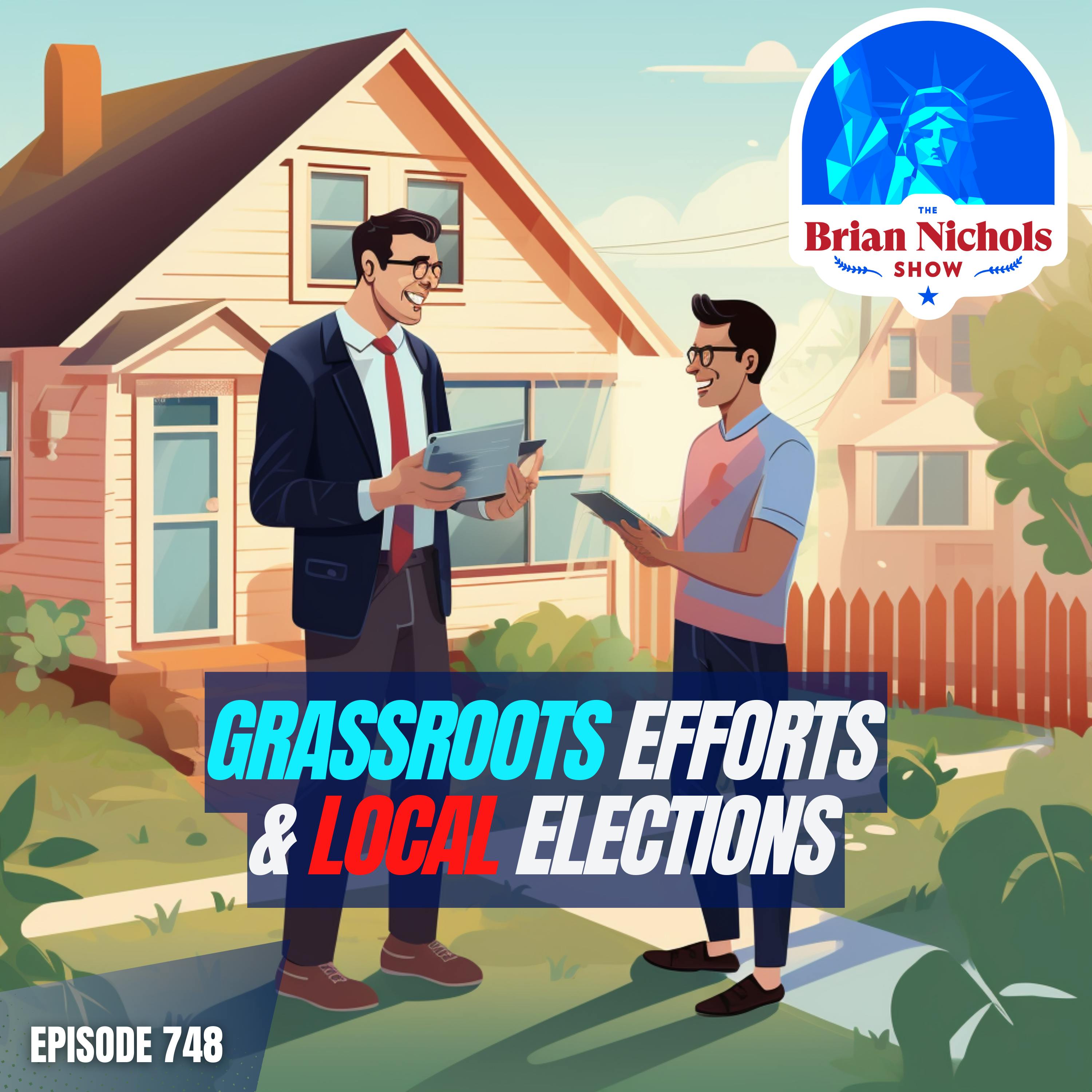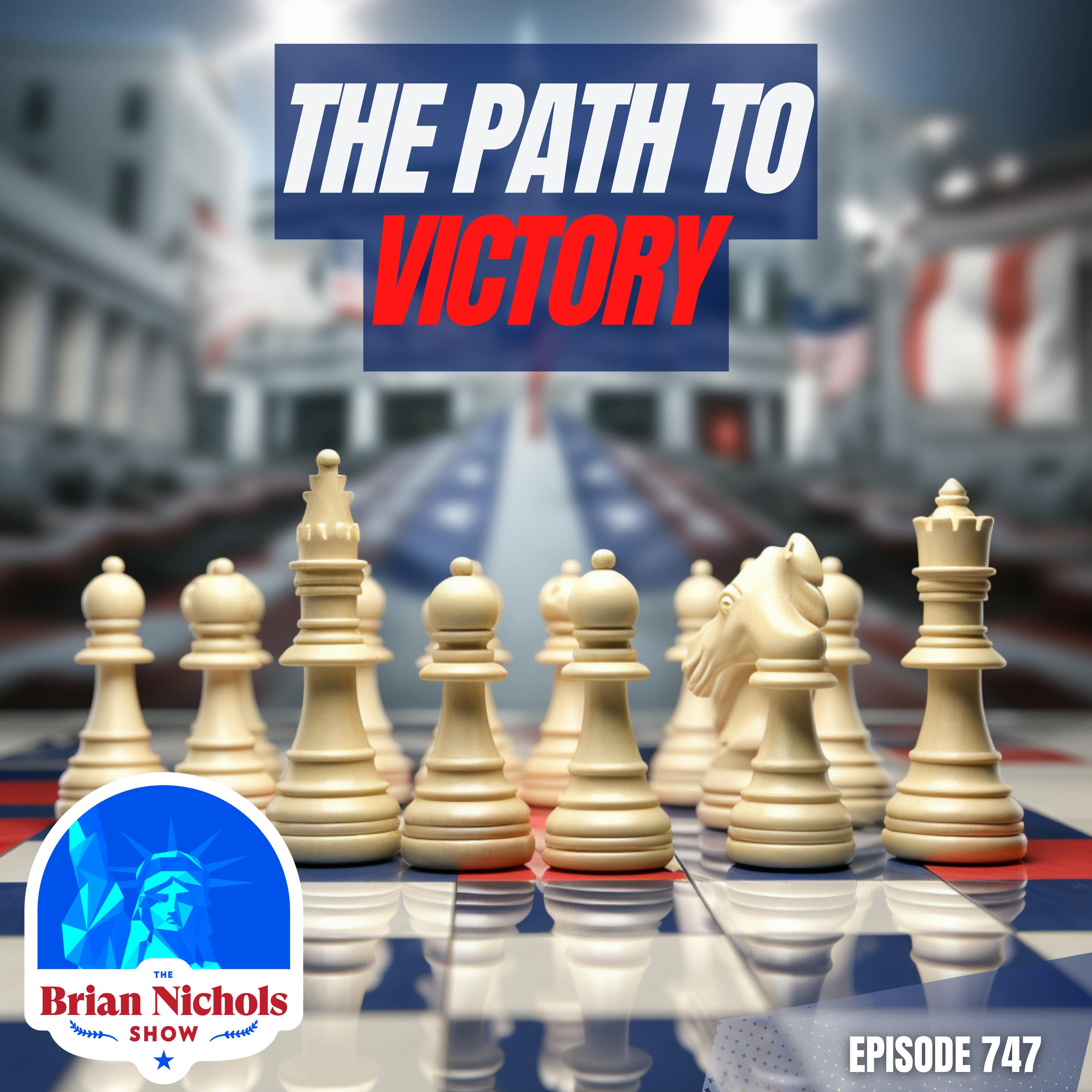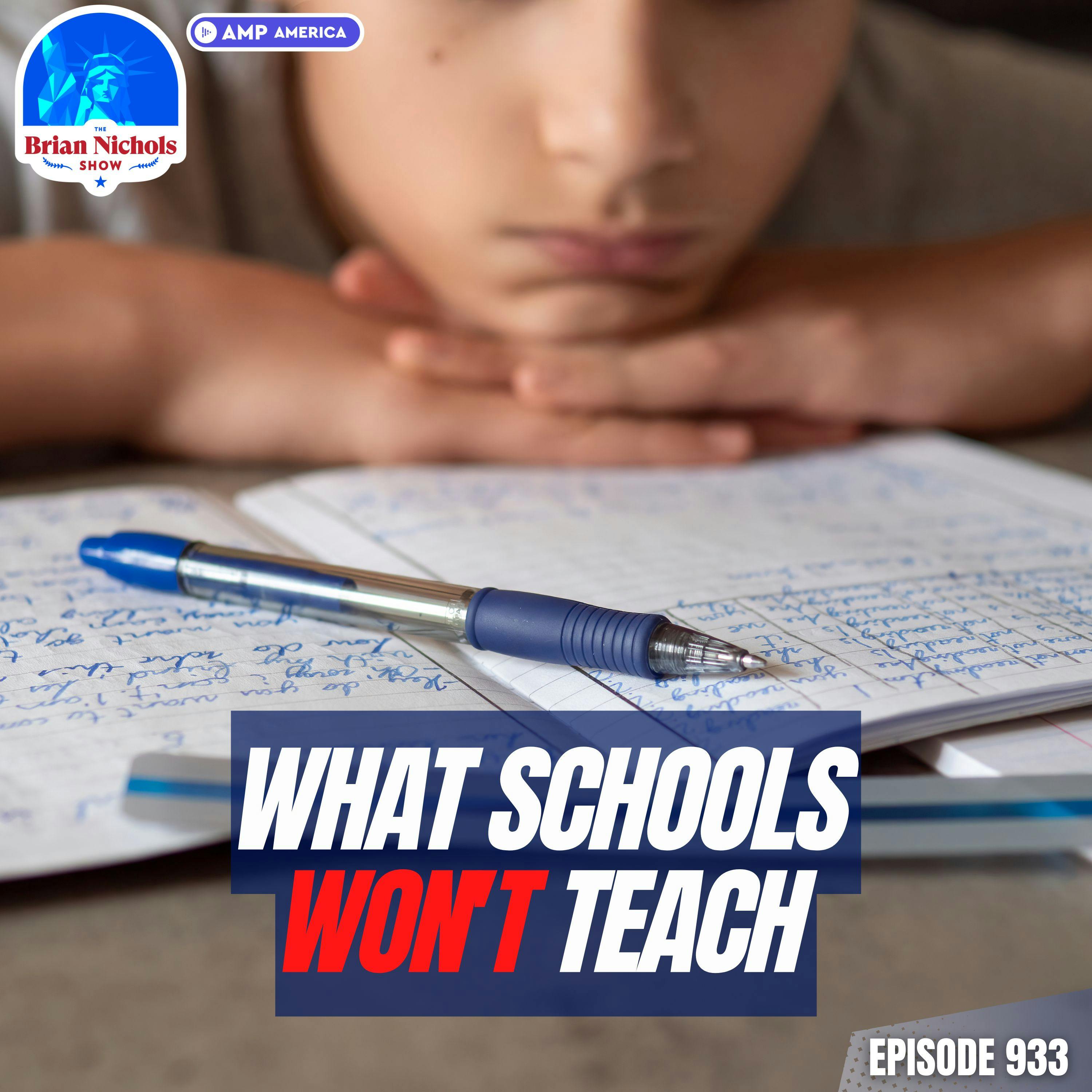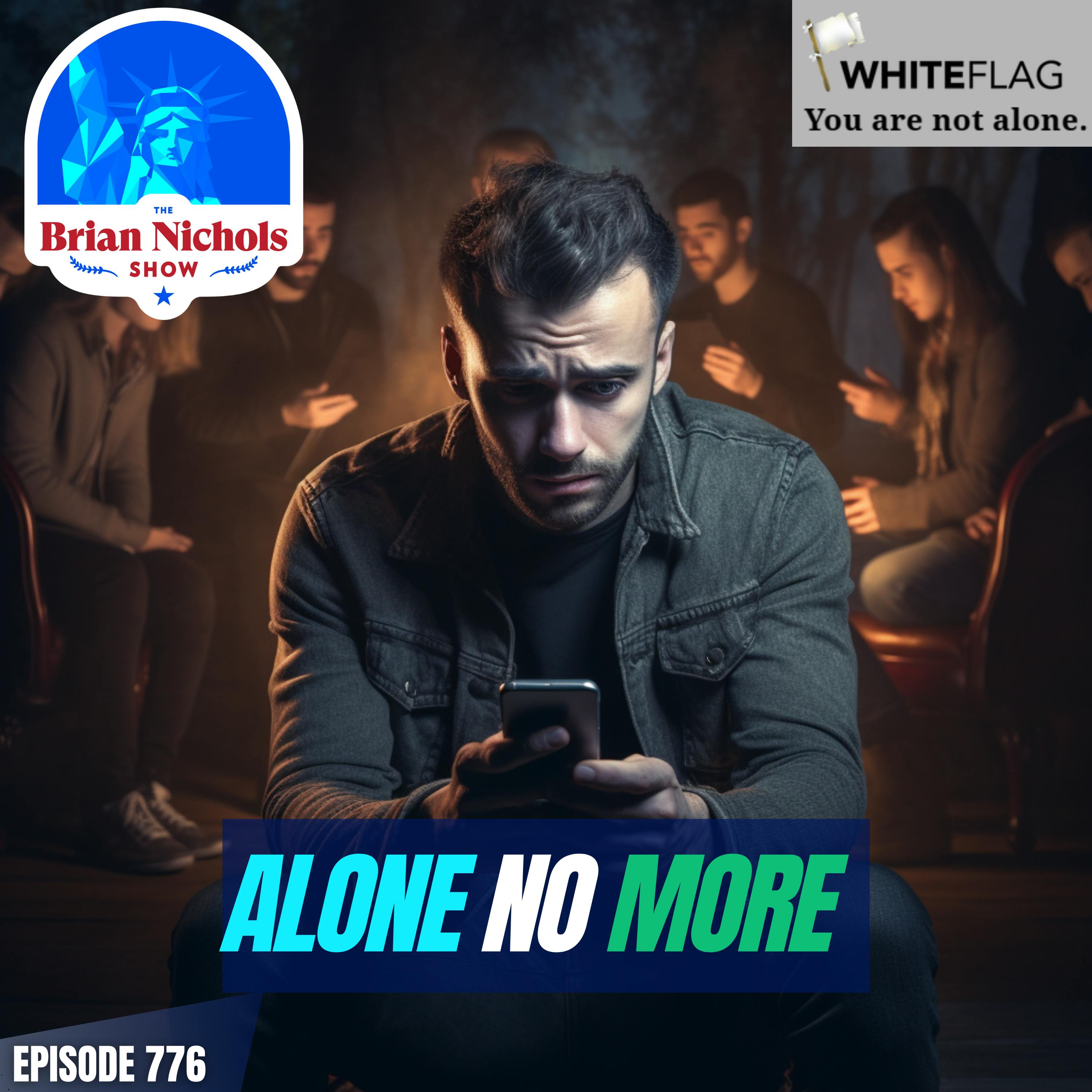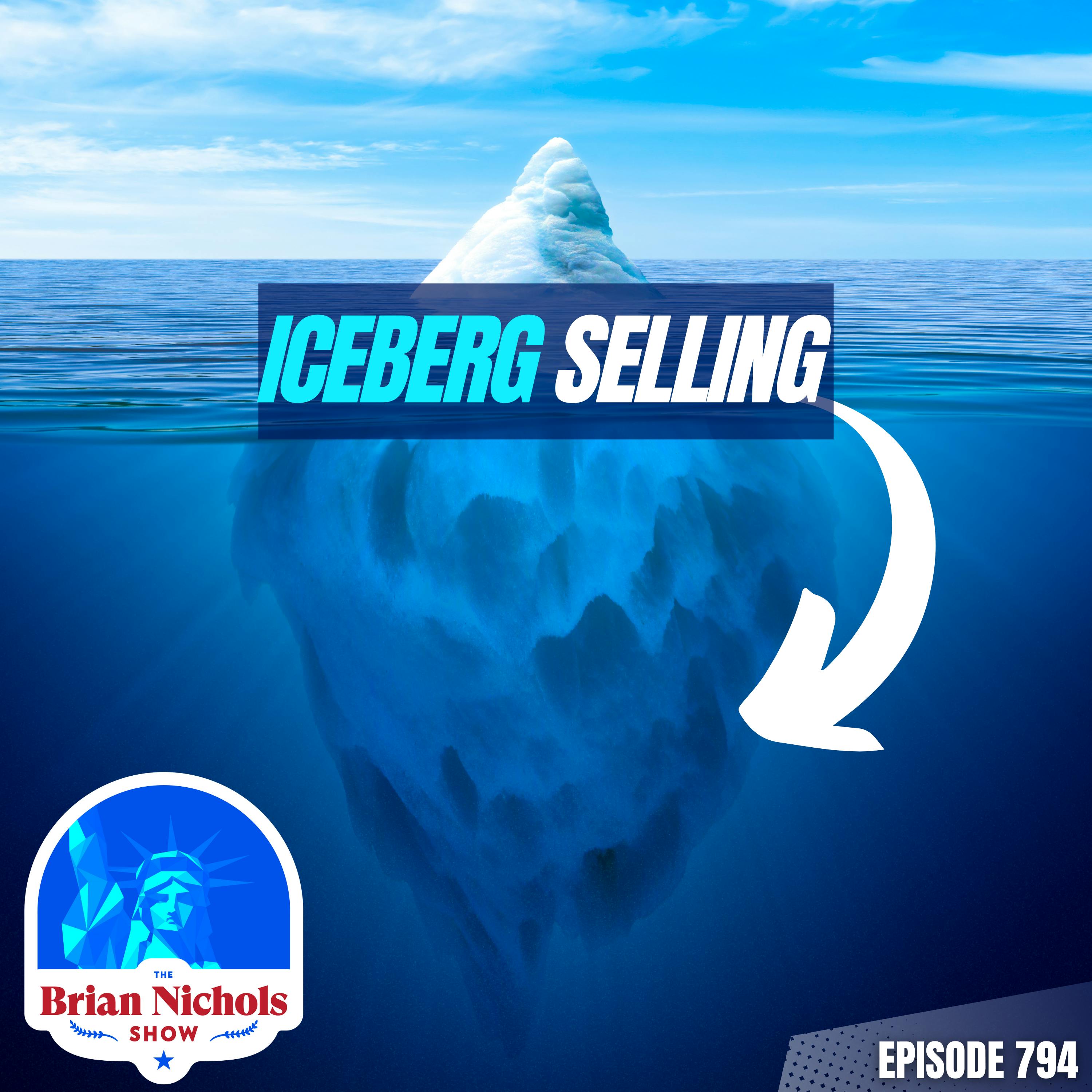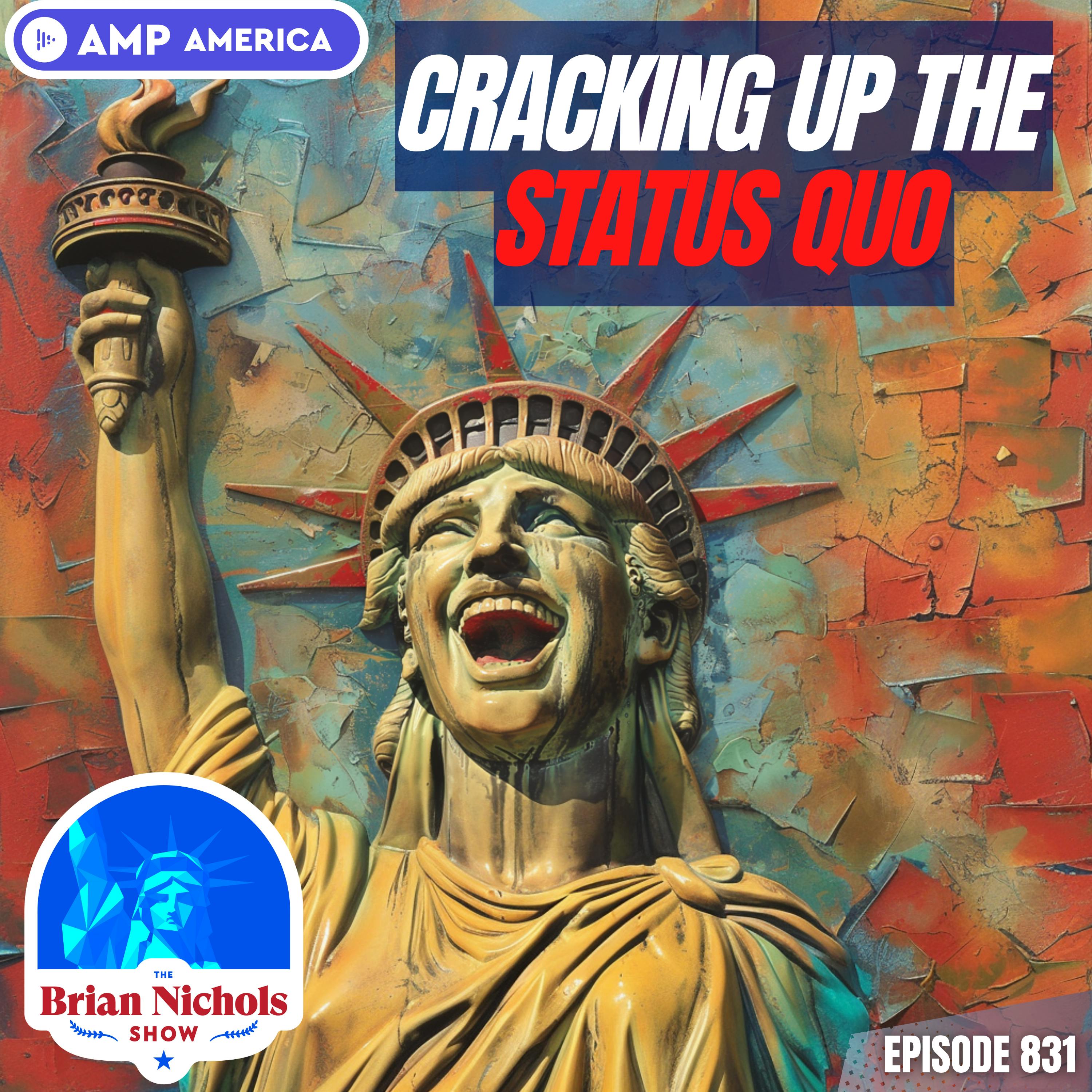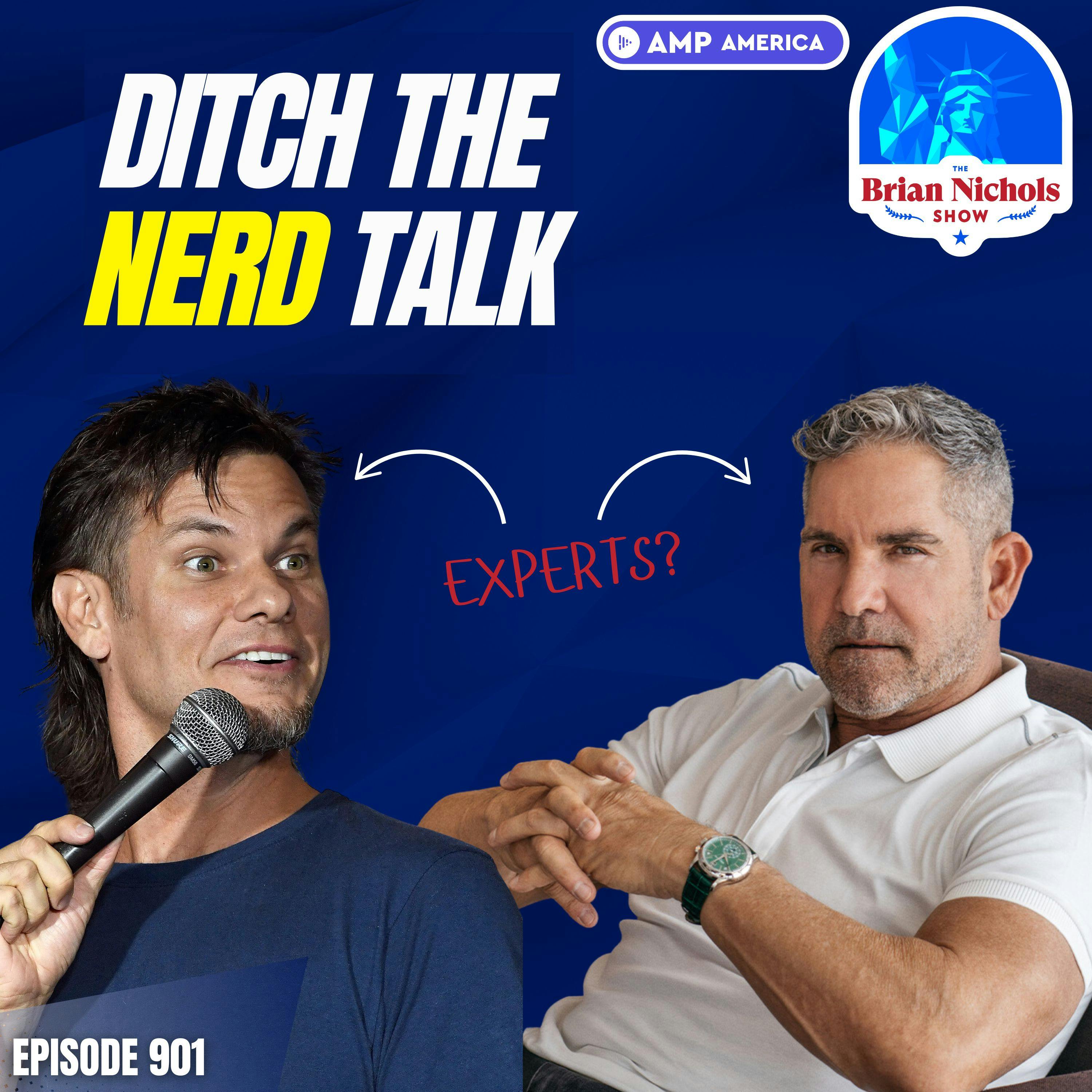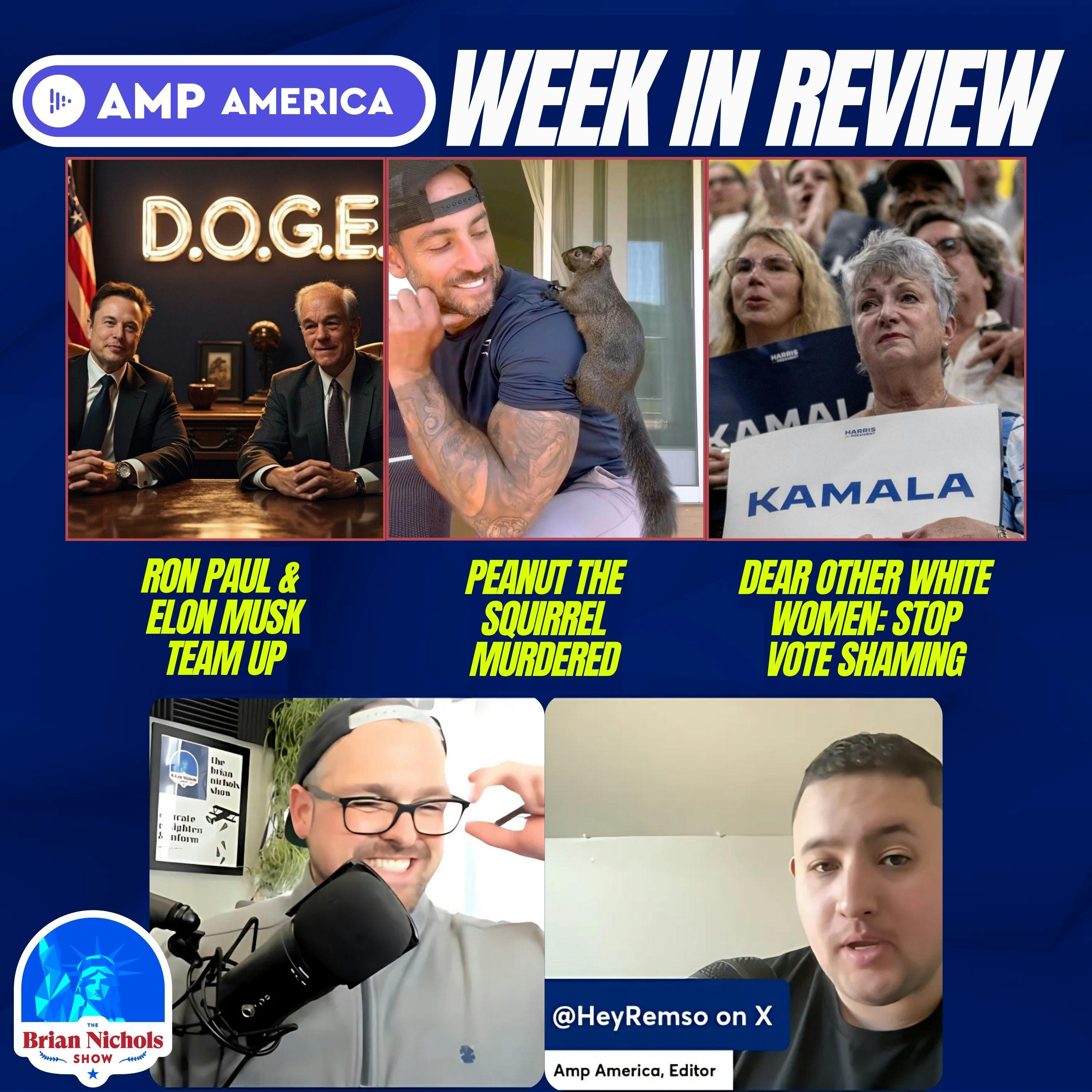685: Beating Fear in Sales & Storytelling - The Fearless Mindset for Success
Becoming the Master of Your Fear: Tips from @John_Livesay (The Pitch Whisperer)
Are you tired of feeling stuck in your personal or professional life because of fear? Do you struggle to create compelling stories that captivate your audience and drive sales? Then get ready for a super-helpful episode of The Brian Nichols Show that will inspire and empower you to conquer your fears and become a master storyteller!
Join Brian Nichols and his guest, John Livesay, The Pitch Whisperer, as they discuss how John's experience as a former lifeguard has influenced his career in sales and storytelling. John shares a story of how he used techniques from his lifeguarding days to help a young girl overcome her fear of jumping off the high dive. Little did he know that those same techniques would later help him in his sales career.
But that's just the beginning. John and Brian dive deep into the topic of fear and how it can hold us back in all areas of life. John shares his expert advice on how to overcome fear of rejection, fear of the unknown, and fear of failure, so you can break through the barriers that are holding you back and achieve your full potential.
And if you're struggling to create compelling stories that captivate your audience and ultimately drive sales, John has some game-changing insights for you. He shares a simple checklist for crafting a story that is clear, concise, and compelling, and emphasizes the importance of incorporating emotions into your story to make it truly unforgettable.
So if you're ready to take your life and career to the next level, tune in to this episode of The Brian Nichols Show. It's packed with practical advice, inspiring stories, and powerful insights that will help you conquer your fears and become a master storyteller!
Learn more about your ad choices. Visit megaphone.fm/adchoices
Studio Sponsor ➡ Cardio Miracle: Your health is an investment - NOT an expense. - 15%off using code TBNS at checkout
Support our Sponsors!
Support the program with a one-time donation or join our Patreon!
Take our audience survey for a chance to win a "Don't Hurt People, Don't Take Their Stuff" bumper sticker!
Brian Nichols 0:10
Can we learn a thing about sales by learning things from a lifeguard? Let's talk about that. Instead of focusing on winning arguments, we're teaching the basic fundamentals of sales and marketing and how we can use them to win in the world of politics, teaching you how to meet people where they're at on the issues they care about. Welcome to The Brian Nichols Show. Well, happy Monday there, folks, Brian Nichols here on The Brian Nichols Show. And thank you for joining us, of course, another fun filled episode. I am as always your humble host going to you live from our Stratus ip studios. Don't let cyber attacks or outdated visit technology put your company at risk. Learn more at the Brian Nichols show.com forward slash Stratus ip. So can we in fact, learn some sales techniques from a story from a lifeguard joining us today to discuss all that and more. John, let us say, John, welcome to The Brian Nichols Show. Hey,
John Livesay 1:01
Brian, thanks for having me. I think I should probably clarify that I'm a former lifeguard. I'm not currently on duty. Well,
Brian Nichols 1:08
that'd be good. Because right now you're devoted attention, I think is for 20 minutes towards The Brian Nichols Show audience. We don't want any accidents happening. But hey, let's actually rewind a little bit because we're going to start things off today telling or your rather you're going to tell a story about when you were a lifeguard and how that experience of being a lifeguard actually impacted a lot of where you are today, not just in your your world of sales, but also in storytelling. And that is something you learned when you were a lifeguard. So John, how about we start things off there?
John Livesay 1:35
Sure you picture the I'm about 19 years old so many years ago sitting on my lifeguard perch in the suburbs of Chicago. On a hot summer afternoon. Usually, I had a whistle around my neck and some near sunglasses and zinc oxide on my nose thinking I looked pretty cool. But mostly I just blew the whistle that kids running on wet cement not to fall. But there's one afternoon, Brian, there's a little 12 year old girl standing on the edge of the high dive looking down with a great deal of trepidation. And I thought, oh, boy, this is probably her first time jumping off. And that alone made me sit up on the edge of my left guard perch. And she finally got the courage to jump off. And I started counting how many seconds is she underwater four seconds, five seconds, six seconds. And I thought Ah, she's been under too long. She finally gets up. She's flailing and coughing. And I thought even if I threw a buoy, she wouldn't see it. So I dive in polar the side. And she's still choking and coughing, but I knew she was going to be okay. So while that had that happened so many years ago, the lesson of stress and panic not happening. But instead staying calm has stayed with me my entire career. Even when years later, I got laid off from a job, that lesson to not panic and stay calm, which is another story really stayed true for me.
Brian Nichols 2:59
And I wanted to maybe dig into what you then go on to explain a bit more. And that's something we've talked about here on The Brian Nichols Show, because as we teased in the intro, we talk about not just the world of sales and marketing, but also how can we apply them to the world of politics. And sometimes John requires us to get outside of our comfort zone. So can you talk a little bit a little bit about getting out of your comfort zone? And how that helps you along your way?
John Livesay 3:21
Yes? Well, when you are in a comfort zone, you tend to do things the same way go to work the same way every day, or whatever it is. In my case, I've been selling advertising for Conde Nast for magazines for many years. And then I got the call from my Boston, New York saying, you know, we've decided we're going to have to lay off everybody outside of New York and 30% of the sides, you know, salespeople in New York as well. So I said, Well, don't you need to stablish reports and know where these ads that are scheduled should appear. And she said, Well, that'd be great. But everyone else is so angry, they're storming out. And I thought I'm not going to do that. And it was my lifeguard training to not panic when I was getting laid off. That really impacted me because little did I know that two years later, I'd get rehired by leaving on such a good note. And I ended up winning salesperson of the year for all of Conde Nast against 400 reps around the world. So that ability to stay calm under pressure really helps all of us in many situations. And of course, we all just experienced a pandemic disrupted again. So we have a choice. Do I panic here? Or do I stay call?
Brian Nichols 4:29
Well, and that leads right into the next part. And that is well fear, right? We've all felt fear over the past three years, and we feel fear in a lot of different areas in life. So what are the three phases of fear? And how would you recommend we address in there, John?
John Livesay 4:44
Well, the first one is the fear of rejection. And of course, if you're in sales, you know, that fear is common, but my solution here is to never reject yourself or what you're selling. When I was selling ads for Conde Nast and they were they were going with somebody else. I thought maybe somebody else could have convinced them. to say yes, or maybe what I'm selling isn't the best. Don't do that to yourself. Never reject yourself. The second fear is the fear of the unknown. Well, what's going to happen in the future? And I think the key here is don't go it alone, collaborate, get some help work with your co workers, get some outside help. And then of course, the final fear is the fear of failure. You know, what, if this doesn't work out, I'll be embarrassed and wasted time and money. And one of my friends said, you know, failure is just feedback. You keep going until you get a zombie idea. So great, it won't die.
Brian Nichols 5:35
You're the pitch whisper. John, talk to us about that. What does it require one to become a pitch whisper.
John Livesay 5:41
There's a whole trading undergraduate program at Harvard. I was giving a sales keynotes talk to anthem insurance. And they had said, you know, after your talk, could you stay, we're going to have an improvisation session, people are going to shout out objections from the audience, and people are gonna be on stage role playing. And if you could stay on stage and whisper in their ear, something from your talk in case they got stuck, that would be great. And it worked really well. And people loved it. And they said, Oh, I wish you could be my ear when I'm in the field. And I told that story to Ink Magazine. And they said, Well, sounds like you're the pitch whisperer. I loved it. And I took it, and now trademarked it.
Brian Nichols 6:22
I like it. Well, there you go. Um, well, let's talk about something I think, goes along with why you got called the pitch whisperer. And also goes to why the audience has been so captivated today throughout the episode, that is that you're really good at telling stories, John, talk to us about how we can more effectively craft compelling stories that get people captivated, but also eventually sell?
John Livesay 6:43
Well, there's a checklist for your story. It should be clear, concise, and compelling. If it's not clear, and you use a bunch of acronyms and confuse people, they're gonna say, No, it needs to be concise. Because you need want people to be able to remember and repeat your story for you when they have other meetings and other people they meet. And finally, it needs to be compelling. Because it has to tug at our heartstrings the stakes have to be high enough in the story for us to care about this, what's happening in the story. So clear, concise, and compelling. Is your checklist. The next time you're telling a story, ask people, was it clear? Was it concise enough for you to remember? And did it make you feel anything?
Brian Nichols 7:24
What's a story outside of your own personal stories, but you can just look beyond anything, even in the world of politics, someone who either told a great story or wanted to sticks out in particular that you're like, Wow, that was in fact, a great story. And here's why.
John Livesay 7:40
Well, I would say that, I can give you a story of a client's story. They were selling a product that made surgeries Go 30% Faster. And they couldn't figure out why doctors were buying it. And I said it's because there's no story. And so we crafted this story that imagine how happy Dr. Higgins was six months ago, using our equipment, he could go out to the patient's family an hour earlier than expected. And if you've ever waited for someone you love to come out of surgery, you know, every minute feels like an hour. And the doctor said to them good news, the scope shows they don't have cancer, they're going to be fine. Family was very relieved, the doctor turns to the rep and says, you know, this is why I became a doctor from moments like this. Now that rep tells that case story instead of a case study, or a fact to another doctor at another hospital who nine times out of 10 will say that's why I became a doctor I want your equipment to. So stories like that, that pull people in that they see themselves in, allow you to get people to buy because you're magnetic with your storytelling instead of pushing out of fact,
Brian Nichols 8:49
there were two emotions you brought up there. The first one I hear ya heard was the word happy, which refers to love. And then the other one I heard was the fear that people have when they're sitting in the waiting room. Waiting. I think that is something that we should talk about maybe a little bit more is the use of emotions. When you're crafting storytelling. How do you find effectively bridging both using love and fear to help tell compelling stories?
John Livesay 9:16
Well, a story has four parts. There's the exposition, the who, what, where when you paint a picture, like you're a journalist, I said the doctor's name and location. And the emotion part comes in when you describe the problem. So Brian, the better you describe someone's problem by showing empathy and describing some emotions that that person is feeling in your story. That also gets people that feel something and they have the emotional connection because remember, people buy emotionally and then back it up with logic. Then the third step is the solution. But here's the secret to a great story. There's a resolution What is life like after that product or service or hiring you has happened? So imagine if the Wizard of Oz ended when Dorothy got in the balloon to go back to Kansas, the end But now there's that wonderful resolution scene where she's in bed saying, There's no place like home and you were there. So having four parts of a story that have a motion in it, make us feel something. And that's what helps us remember it.
Brian Nichols 10:15
So when, when we're trying to, and now putting myself into the vulnerability chair here, when you're trying to sell some boring stuff, right, like cybersecurity or technology, just stuff that sometimes feels like you're watching the paint dry, right? How would you recommend being able to craft some compelling stories that get it directors, Chief Information Officers, folks like that, who maybe their you know, particular product set that they're working with also isn't so sexy that they feel it's particularly emotionally driving as well? What would you recommend?
John Livesay 10:48
Well, I work with a lot of companies in technology, and healthcare, who have products that you may not think are, quote, sexy. And so the first thing I do is I will say, What happens if this product doesn't work? So let's take cybersecurity, what are the stakes? If Well, we know what it's like when the emails get hacked, and information gets leaked. And suddenly, there's a little bit of drama. Let me give you another example. When I was working with Honeywell, they make a fan that is in the operating room to keep the room clean. And they talked about how fast it was spinning and particles and nothing really sexy. I said, Well, what happens if the fan doesn't work? And they said, Well, you know, the patients are exposed when they're being operated on, they could get infected. Okay, that's interesting. But here's the two other words, I wouldn't encourage people to ask anything else. And they said, Well, now that you ask it, this is pre COVID. By the way, it also keeps the doctors and nurses from getting secondhand smoke, they're in there all day cutting people in their smoke, I mean, and if that pans out working properly as a hot, that's the story we're going to tell and we're going to tell it to HR, we're not talking to the purchasing department anymore. We're telling that story of safety for the employees to an HR person, and how they need to have that because God forbid, one of those nurses or doctors get secondhand smoke because they didn't get the right fan in the room. Suddenly, the cost is not as relevant, right? It's a must have instead of why do we need a span that spins this much faster? So that's an example of taking something that's a fan, terribly exciting, until you put a story to it.
Brian Nichols 12:30
So how do you recommend and this is maybe tough, because it's hard to figure out what story to tell at the right time, right? And I see this I've been doing this now for about a decade. And I see I have oodles of stories I can pick from at any given time. But how do you know which story to tell at the right moment?
John Livesay 12:48
Well think of your brain like a playlist. Instead of songs coming out, you have stories in there. So it's great that you have multiple stories, but you need to have the right story to the right person, as you said at the right time. So I would encourage everybody listening to write down your three to five big avatars. You know, this is I'm talking to a purchasing person, I'm talking to a CEO, or if you're selling homes, for example, well, there's a situation where it's a families first time buyer, or it's an elderly couple scaling down, have different scenarios ready to go so that you tell a story that is most likely to get that person to see themselves in that story. And then you no longer have to be pushy closing, you just simply say, does that sound like the kind of journey you'd like to go on? And if you've told the right story, nine times out of 10, that person is going to see themselves in it and say, Yes, it does.
Brian Nichols 13:39
We we know when we talk to our buyer, we're talking to a persona, but we're also talking to a person. And I think that's also sometimes the most important thing is to remove the A from Persona. And remember that in fact, it is a human being that you are talking to someone just like you that they put their shoes on the same exact way every morning. So when we're talking to that individual, I think it's not only important to address the business concerns and the business problems, but you mentioned it to the human problems, the human issues that that person is experiencing. So how would you recommend uncovering those in a tactful way? When you're trying to have these conversations with your prospect, whether you're your persona, your target buyer, without maybe being too aggressive, but still touching on those pain points?
John Livesay 14:26
Well, I think it starts at the beginning of a sales call. And I have something where I call it a story of origin. For example, if I was working with you, I'd say Brian, how did you get into this? Data security, all these other things? And you would say, Oh, well, I first stumbled upon it, or I was always fascinated by data or whatever your story is that got you into this. I work with architects, you know, they have all kinds of stories of how they you know, as a kid, were taking downtown to see skyscrapers or played with Legos. There's some human element there. And once you share your own story of origin, it's so I'm easy to then ask the person not the persona, that you're talking to tell me your story of origin. How did you get into this, and you'll be amazed at what comes up. And that builds rapport in a very different way than just talking about sports or whether
Brian Nichols 15:18
you have a brand new book coming out. Now you have some other books in the past, you have the seven powerful selling secrets, you have the successful pitch, and then better selling through storytelling, which obviously, we've been talking about a lot today, but you have a brand new book coming out, it maybe takes a little bit of a turn from that original approach. And instead, you're telling a story about that. And then this is the sale is in the tail. Talk to us about your brand new book, and what can folks expect there?
John Livesay 15:43
Well, it's a business fable. So it literally is a story about storytelling set here in Austin, where I live, there's no reception. And again, the goal is that you're on the journey, and I have people writing me sometimes going, Oh, I thought this lead character was going to do this instead of that. And I love that because it means you're invested in the story. So as you're learning, and seeing yourself in a salesperson who's struggling and in a slump, to get out of that slump, because he learns about storytelling from a co worker, you go on that journey. And then at the end of it, you realize you've actually learned a lot about the different kinds of stories to tell and how to tell them. And there's some methodology and templates for people to follow. So people are very engaged. So it's another way to get the information out without it being quite so direct, but instead a little more entertaining, hopefully.
Brian Nichols 16:32
All right, John, well, we are already heading towards the tail end of the episode, which means we are getting ready for our final thoughts, and how about this, I'll kick things off. And this is something that we've been talking about here in The Brian Nichols Show for goodness since 2018, when we started the program, and that is the idea of storytelling. Now we've been focusing specifically in the world of politics, how do we tell stories in that world. But you know, as we've grown over the years here at the show, we've taken a much more hardline approach to the world of sales and marketing, but also talking to a lot more entrepreneurs and business professionals out there. This obviously, folks, it correlates into the business world, if not, this is kind of what we started focusing on in the business world and having success there. And now bring to the world of politics here, The Brian Nichols Show, and that's why we're doing it because it works. We have folks like John showing that it works. And obviously going through today and outlining how it works. So with that being said, John, that were my final thoughts, what do you have for us?
John Livesay 17:24
I would say that, when you remember that whoever tells the best story is the one that's going to persuade someone to do something that you no longer have to feel like you're pushing out facts and figures. People want to buy from people that they trust. And like, and more importantly, there's an unspoken question everybody has, which is will this work for me? And if you tell a story that they see themselves in, they're going to be answering that question. Yes, I do. Because I see myself in the story. And you're gonna start getting more people to buy whatever it is you're selling. The sale
Brian Nichols 17:55
is in the tail, John, where can folks go ahead and grab their copy if they want to start reading as soon as possible?
John Livesay 18:03
Well, it's on Amazon. It's also an audible with me narrating it, if you take out your phone and text the word pitch p i t ch 266866, you get the first chapter for free to see if you're intrigued enough to want to read more
Brian Nichols 18:17
66866 we will include that link in the show notes. And also folks just to make sure you didn't miss anything from today's episode, we're going to make it really easy for you. If you're joining us here on the audio version of the show, which I know 99% of you are click the artwork in your podcast catcher, it'll bring you over to today's episode where you can find the entire transcript from the episode. Plus, you can find all of John's links plus you can find all 684 other episodes of The Brian Nichols Show. Now, with that being said, also, we do have a video version of the show, which I know some of you can go ahead and find both on YouTube Odyssey and rumble. But do me a favor wherever you go hit that little notification bell and subscribe button so you don't miss a single time we go live. And with that being said, John, where can folks go ahead? And if they want to follow you continue the conversation. We're gonna go ahead and do that
John Livesay 19:05
on Instagram. I'm the pitch whisperer. And you can also follow me on LinkedIn, which is just my name, John, like I say, and I look forward to interacting with as many people as interested in hearing more about storytelling.
Brian Nichols 19:18
Perfect. All right, folks. Well, there you have it. And by the way, the conversation today will not end there. If you're joining us here on the YouTube. Well, you know that not only is storytelling important in when you're trying to help make people change a decision or actually make a decision, but also building trust. How do you build trust? We're going to continue that conversation here on YouTube with Darryl sicko. He joined me to talk about all that and more so I will see you over there. But with that being said, it's Brian Nichols signing off. You're on The Brian Nichols Show for John limit say we'll see you tomorrow.
Transcribed by https://otter.ai

John Livesay
Author / Keynote Speaker / Public Speaker /
John Livesay, aka The Pitch Whisperer, is an incredible keynote speaker. His TEDx talk: "Be The Lifeguard of Your Own Life" has over 1,000,000 views and was featured in Larry King’s Show. He has an innate ability to motivate companies’ sales teams to turn mundane case studies into compelling case stories so they win more new business. From John’s award-winning career at Conde Nast, he shares the lessons he learned.
Best-selling author and creator of the online course "Revenue Rockstar Mastery.", Host of his own Podcast “The Successful Pitch” heard in over 60 countries and co-creator of The Superhero U which is a community to help people discover their superhero power and live a life full of confidence and creativity. John has a new book, The Sale Is in the Tale, is a business fable set in Austin, TX, and is about a sales representative whose old ways of selling are not working anymore.




















